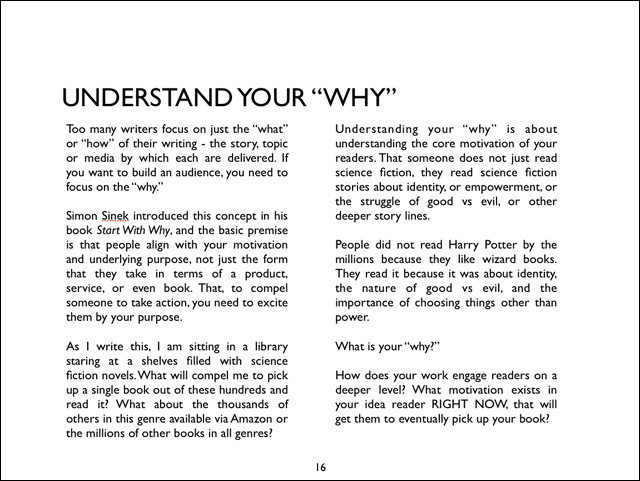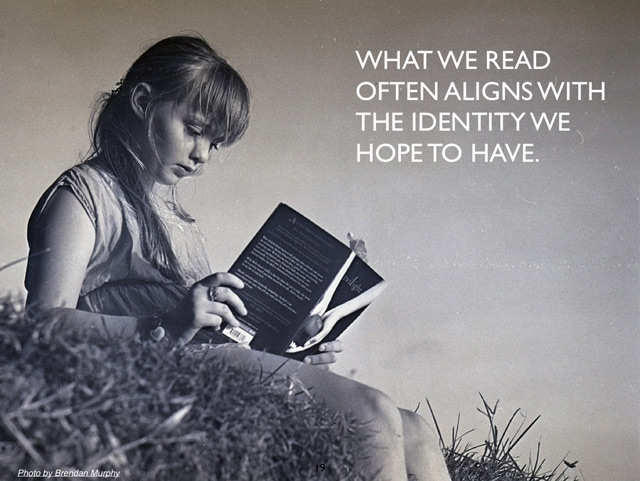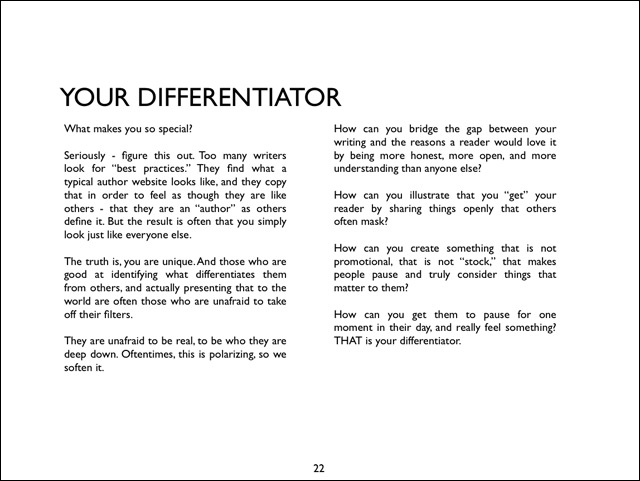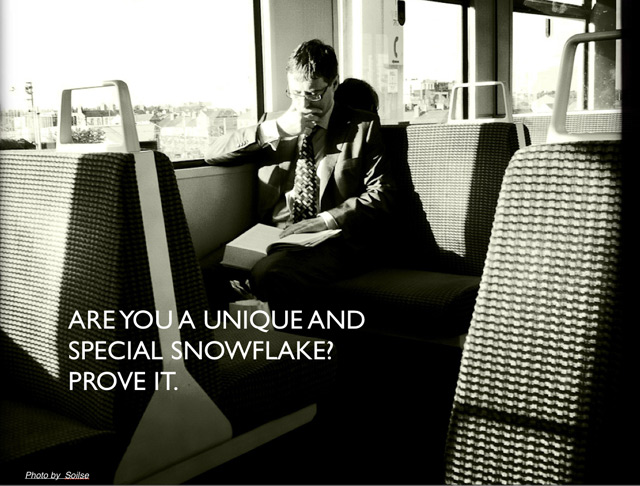“Marketing seems so seventh grade-ish.”
This was a quote from Sarah Beals on a recent blog entry of mine. She explains:
“I hate some of the slimy marketing schemes and feel as though I can’t bring myself to do that. Friendship must still resonate in the heart of human beings…and being a friend must hold some weight.”
We want something deeper in life. Relationships matter. Shared values matter. Like-minds matter.
Recently, I have been talking a lot about how you identify and reach your ideal audience. So if you are a writer, how do you reach that ideal reader? Some recent posts on the topic:
- Do You Know Who Your Audience Is? No, Really: Do You?
- There is a Difference Between Knowing Your Audience and Writing to One
- Finding Your Audience is About Becoming More Like Yourself, Less Like a Marketer
Inherent in this is understanding your ideal audience in a more holistic manner, knowing not just what they buy or what they like to read, but their deeper motivation for doing so.
Why are you a fan of a certain genre or author?
Why do you spend countless hours obsessing over this?
What is the deeper motivation behind it?
I found a really compelling example of this earlier this week. Okay, bear with me here for a minute, because it’s a non-book example, but illustrates the point so well.
My wife graduated from college with a degree in toy design, and truth be told, I have always collected toys. We are the type of couple that, even before we had a kid, would just go to Toys R Us to walk around for an hour. Recently, I started learning about Gundam model kits – basically they are plastic models that snap together, and create robot action figures. (I’m simplifying here.) This is a Gundam model:
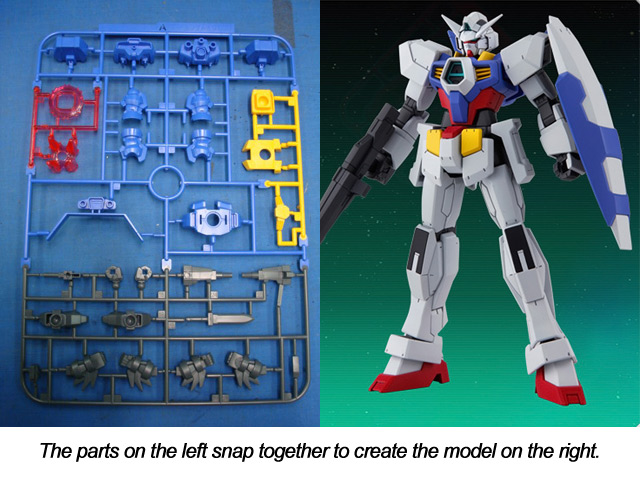
There are LOTS of folks on YouTube who vlog about their obsession with Gundam models. One of those people is nicknamed ED, who is 18 years old and has more than 1,000 subscribers to his YouTube channel. This week he posted a long video where he told his own story answering this question: “What is Gundam To You?”
He didn’t talk about how “awesome robots are!” He talked about his parent’s divorce, alienation in school, finding his identity, and how making Gundam model kits gave him a sense of control and purpose when his life otherwise felt as though it had fallen apart.
At minute 7:26 he talks about the feeling he got when he finished his first Gundam model:
“I built this. I made it with my hands… I felt proud to have made something. It was a feeling of security after my parent’s had split knowing that I could actually create something. That I could change something from being in little pieces, back up to something whole. It really calmed me for some reason.”
Later in the video, he goes on:
“Gundam was the only thing I was really sure of any more. My YouTube channel, the Gundam community, and the Gundam itself hadn’t let me down. It never faded away, it never made me sad. Everyone in the community had accepted me, and never turned their backs on me.”
“What Gundam gave to me primarily, was hope, and a sign that I could create and change things. A sign that I could make a difference with something in my life. Taking all these little broken pieces off the ground that were shattered, kind of resembling how my life was at the moment, and then building them into something more epic than my words could ever describe. And that’s what I did with myself. I picked up all of the broken pieces that I was, and I built myself into the person I am today.”
Here is ED’s full story:
Sixteen other people so far have create video responses to ED, sharing their own reasons for liking Gundam models:
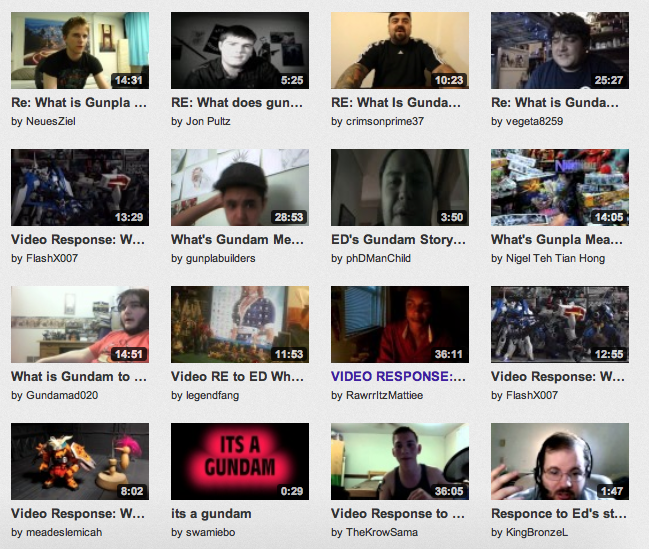
When I talk about understanding your audience, THIS is what I am talking about. No, it doesn’t have to be a therapy session, but it should be about more than just surface level stuff. You should understand core motivation because that is what connects your story to readers. It helps you understand how to reach these people, and how to connect with them without necessarily “marketing” to them.
That this is not about marketing tricks, but the basics of finding meaningful connections.
Why does Katniss Everdeen or Harry Potter resonate with someone? It is not about bows and arrows or magic wands. It goes deeper.
How is what you share representative of what your audience hopes for in their identity and their journey through life? THAT is the deeper connection and motivation of a fan of a story, a book, a writer, a genre.
How well do you know your ideal reader as a WHOLE person.
Not just what they read, but WHY they read it.
Move beyond simple demographics, and easily defined topics or genres.
Every week, I get a copy of The New Yorker in the mail. Every week, it is filled with articles about topics I have no prior knowledge of or interest in. Each issue will be filled with a weird range of topics: turtles, a fashion designer, an athlete, a celebrity, a place, a time, etc.
And yet, I am always intrigued. I always read it. I always look forward to it.
It is crafted to connect with something deeper in me. A point of view. A set of values. A certain type of understanding, curiosity or need.
How will your writing connect with an audience in a similar way?
Thanks!
-Dan

